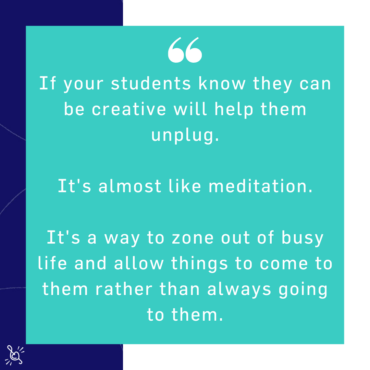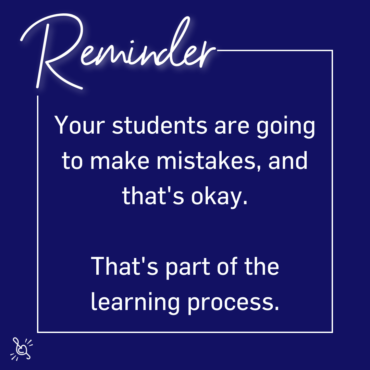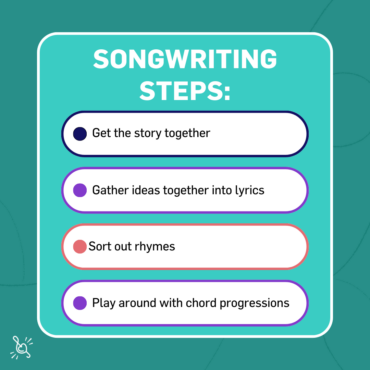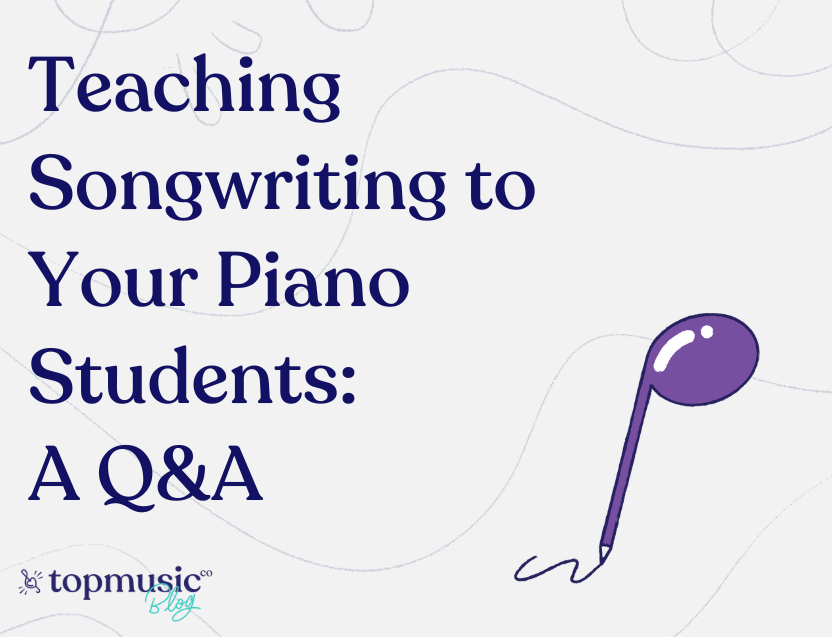how can you incorporate teaching songwriting into your piano lessons?
Many piano teachers shy away from teaching songwriting. They lack confidence in this area, so they tell their piano students they cannot help with it.
Does this sound like you?
I’m here to answer your question on why and how you can incorporate teaching songwriting into your piano lessons.
Table of Contents:
Being creative is essential.
But giving your students the space to be creative is also important. They can take that with them in life, whether or not they become songwriters, composers, or musicians.
Knowing they can be creative will help them unplug. It’s almost like meditation. It’s a way to zone out of busy life and allow things to come to them rather than always going to them.
We all have the capacity and ability to be creative, but we must permit ourselves.
Permit yourself to be bad, to write a terrible song, and throw it out. That permission is valuable and powerful.
For tweens and teens, it’s a fantastic way to approach theory.
If students make decisions about dynamics, mood, and key, they’ll start noticing those elements in their pieces. They’ll look at music with a new understanding. Rather than simply noticing a forte in bar 14, they’ll start thinking, “Why did the composer put a forte there? What were they conveying?”

The best thing to do is keep at it. It’s like trying anything new—if you’re doing yoga for the first time, you’ll be achy after the first session. You’ll rip the dough if you make bread for the first time, but the more you do it, the easier it gets.
Encourage your students to take a song they like and think about why they like it. Is it the subject matter? The rhyme scheme? Guide them to emulate it and they’ll eventually create their own style.
Do some automatic writing – just a page. Set a five-minute timer and instruct them to write any lyrics that come to mind. You can help them decide on a subject to write about if that makes it easier to start. No editing, no criticizing, no judging.
Then, read it and see if anything jumps out for a title.
In the next lesson, set a five-minute timer and write lines that link to the title. Keep mentioning the title.
Do a little bit more every week. When things start to take shape, devote the whole lesson to the song.
When starting out, they don’t have to write in rhythm or attempt to write a poem. You just want them to get it all out on the page.
They’re creating the story of the song. Then, you’ll help them map it into verses, chorus, and bridge. What happens in verse one? Boy meets girl? Then what happens when they get to the chorus?
The next step is putting rhymes together. You could use a song you like as a template. How do their lines rhyme? Analyze it and see if you can work your lines into that rhyme scheme.
When your student has a couple of verses of lyrics and rhyming patterns, take it to the piano.
Use the standard pop song chord progression (I – IV – V or I – VI – IV – V) and improvise over the top (either on the piano or singing). Take the natural rhythm of their lyrics and use it to create a melody.

You can always change it or use a different progression. But even if you kept the same progression, millions of songs have that progression and are different.
You can play around depending on the lyrics and what kind of mood your student is after.
Try giving them some progressions to try and sing over the top of and see which ones they prefer.
You could also take a song they love and use the progression from the verse, followed by another song they love and use the progression from the chorus.
Don’t be afraid to call upon existing songs your students enjoy the sound of and use them for inspiration.
Related: How To Write Your First Piano Chord Progression: Breaking Down the Basics
You can use C, G, or F. Students who are quite advanced at playing can find composing and songwriting a whole different world.
Keep things simple, to begin with, and then they can experiment with different keys.
Not at all. The majority of pop songs are simple. That’s why they get stuck in our heads!

The next step? Encourage your students to sing. Many students are uncomfortable singing, and that’s okay—they don’t have to.
You could sing for them, or they could use their lyrics to create melody lines for an instrumental piece.
Encourage them to give themselves the green light.
Give them permission to fiddle around and write terrible stuff.
Think about Van Gough: everyone thought he was terrible when he was alive, and now he’s a genius.
Have fun. And if it doesn’t turn out, that’s okay. Just keep going.
They’re going to make mistakes, and that’s okay. That’s part of the learning process.
For even more tips and ideas on helping your piano students learn the art of songwriting, you can download the Songwriting Special of the free TopMusicMag. Click here to learn more.

Rohit says:
This is fantastic! Teaching songwriting to piano students not only enhances their musical skills but also fosters creativity and self-expression. I’m intrigued by the Q&A format – it seems like a great way to address common questions and concerns about incorporating songwriting into piano lessons. As a piano teacher myself, I’m excited to explore these strategies and inspire my students to unleash their creativity through music. Thank you for sharing your expertise in this area! #MusicEducation #SongwritingSkills 🎹🎶